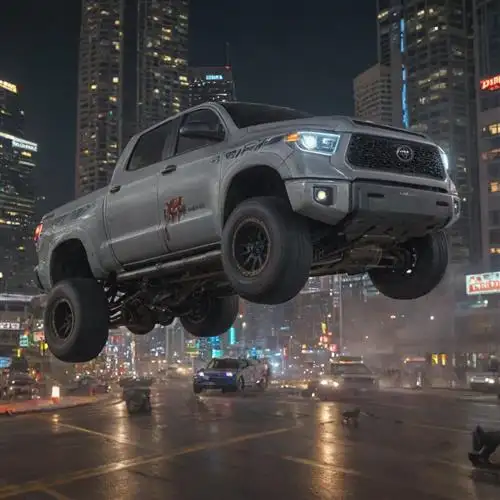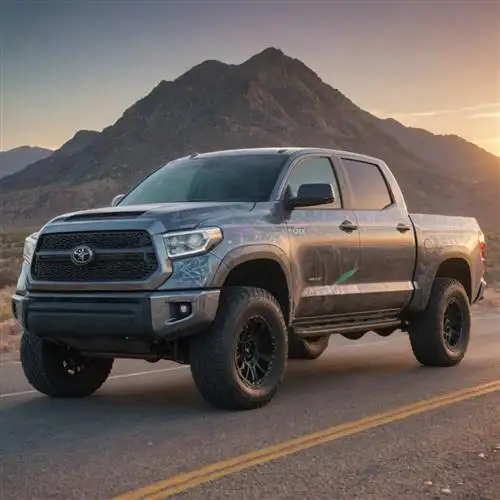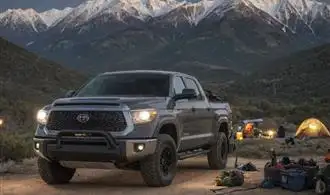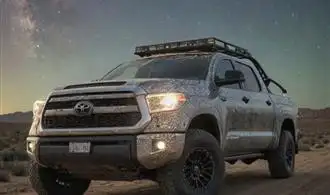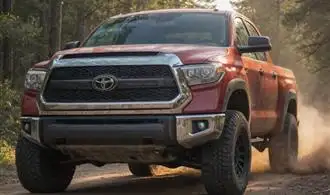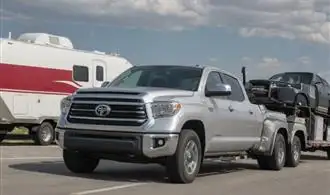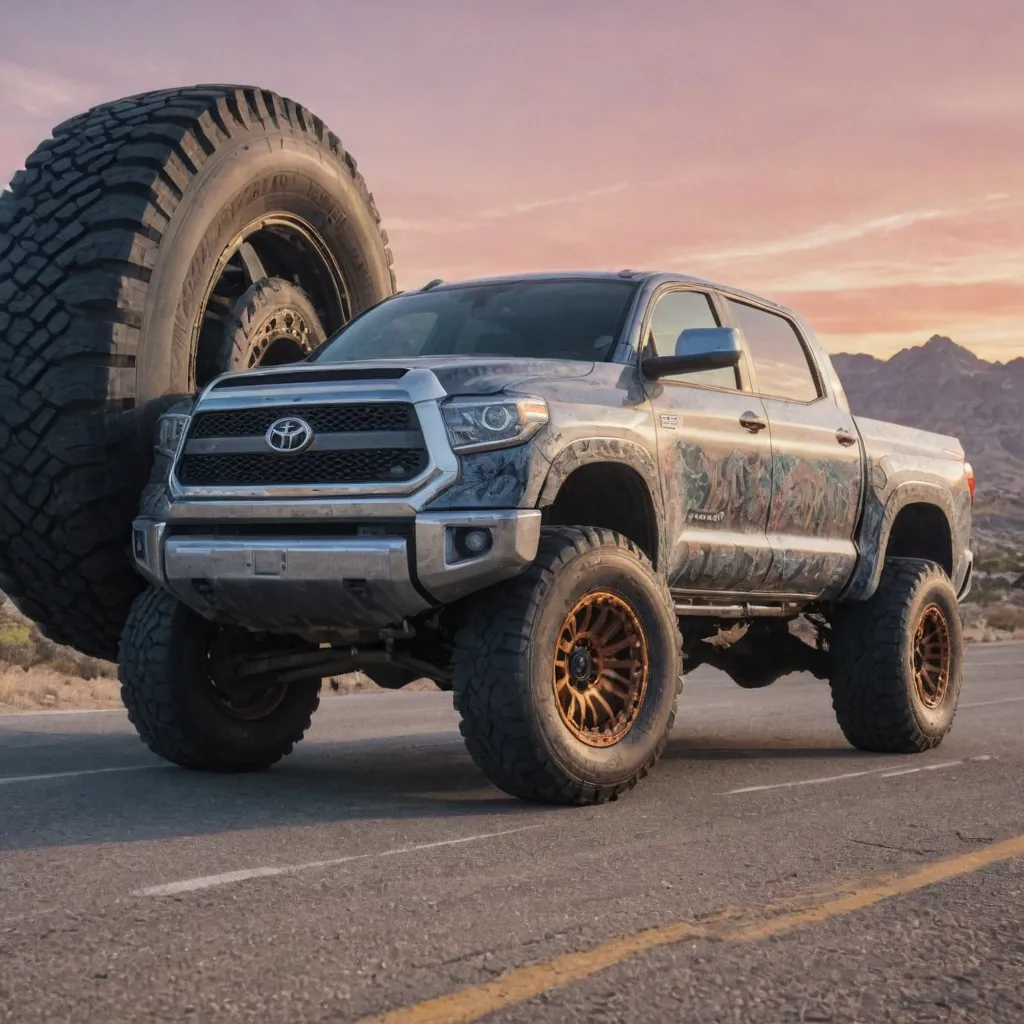
Engine Upgrades for Power Boost
Unlocking the full potential of your Toyota Tundra's performance starts with enhancing its engine capabilities. From air intake systems to high-performance exhaust upgrades, a variety of modifications can dramatically improve your truck's power output and responsiveness. Let's explore some of the most effective engine upgrades to consider.
Air Intake System Upgrades: Replacing your Tundra's stock air intake with a high-flow aftermarket system can significantly improve airflow, allowing the engine to ingest more oxygen. This translates to increased horsepower and torque. Look for intake kits that feature large, free-flowing filters and mandrel-bent tubing for optimal airflow efficiency.
Exhaust System Upgrades: The stock exhaust system on the Tundra is designed for balanced performance, but upgrading to a performance-oriented exhaust can unleash even more power. Opt for a cat-back or axle-back exhaust system that features larger-diameter piping and less restrictive mufflers. This setup will reduce backpressure and allow the engine to breathe more freely, resulting in a noticeable boost in power.
Forced Induction Upgrades: For those seeking even greater power gains, consider adding forced induction to your Tundra. Supercharger or turbocharger kits can dramatically increase engine output, with some setups capable of delivering 50% or more additional horsepower. These upgrades require careful selection and installation to ensure reliable performance and maintain engine integrity.
Engine Control Unit (ECU) Tuning: Modifying the ECU's programming can unlock hidden performance potential within your Tundra's engine. Professional tuning services can optimize ignition timing, fuel delivery, and other parameters to maximize power output while maintaining drivability and fuel efficiency. This is a highly effective upgrade that can complement other engine modifications.
Suspension Modifications for Improved Handling
When it comes to enhancing the performance and handling of your Toyota Tundra, one of the most impactful areas to focus on is the suspension system. Upgrading your Tundra's suspension can dramatically improve its responsiveness, stability, and off-road capability. Here are some key suspension modifications to consider for your Tundra:
Lift Kits: Installing a quality lift kit can provide numerous benefits. It can increase ground clearance, improve approach and departure angles, and allow for larger, more aggressive tires. This can significantly enhance the Tundra's off-road capabilities and overall handling. When selecting a lift kit, it's important to choose one that is designed specifically for your Tundra model and to have it properly installed by a qualified professional.
Shocks and Struts: Upgrading the shocks and struts on your Tundra can have a profound impact on its handling and ride quality. Opt for high-performance, adjustable shocks that can be tuned to your driving preferences and terrain. Look for brands that specialize in off-road and performance-oriented shocks, as they often offer superior damping and improved responsiveness.
Suspension Bushings: The condition of your Tundra's suspension bushings can greatly affect its handling and stability. Replacing worn or deteriorated bushings with polyurethane or spherical alternatives can provide a noticeable improvement in responsiveness and eliminate unwanted play in the suspension components.
Sway Bars: Upgrading the front and/or rear sway bars on your Tundra can enhance its cornering abilities and reduce body roll. Thicker, adjustable sway bars can help maintain better control and stability, especially when navigating high-speed turns or tight off-road trails.
Wheel and Tire Upgrades: Pairing your Tundra's suspension modifications with the right wheel and tire combination can further improve its handling. Consider wider, more aggressive tires that provide enhanced grip and off-road performance. Ensure that the wheel and tire sizes are compatible with your Tundra's suspension components and do not exceed the recommended load ratings.
Aerodynamic Upgrades for Enhanced Speed
Improving the aerodynamics of your Toyota Tundra can have a significant impact on its performance, providing a noticeable boost in speed and fuel efficiency. One of the primary areas to focus on is the front bumper, which can create significant drag at higher speeds. Installing a specialized front bumper or splitter can help to smooth the airflow over the vehicle, reducing turbulence and increasing overall aerodynamics.
Another key area for aerodynamic upgrades is the side mirrors. Stock mirrors can create unnecessary drag, so replacing them with smaller, more streamlined units can help to improve the Tundra's overall aerodynamic profile. Additionally, considering the installation of side skirts can further enhance the vehicle's ability to slice through the air, reducing drag and increasing speed.
The rear of the Tundra is also an important consideration when looking to improve aerodynamics. Upgrading to a rear spoiler or tailgate spoiler can help to reduce lift and improve the vehicle's stability at higher speeds. These aerodynamic enhancements can not only increase the Tundra's top speed but also improve its handling and overall responsiveness on the road.
It's important to note that when selecting aerodynamic upgrades, it's crucial to choose high-quality, well-engineered components that are specifically designed for the Toyota Tundra. Poorly made or generic parts may not provide the same level of performance improvement and could even negatively impact the vehicle's handling and stability.
Braking System Enhancements for Improved Stopping Power
The Toyota Tundra is a robust and capable full-size pickup truck, but its stock braking system may not always meet the demands of heavy-duty hauling, off-road adventures, or the need for improved safety. Fortunately, there are several enhancements you can make to the Tundra's braking system to dramatically improve its stopping power and overall performance.
One of the most effective upgrades is to install larger brake rotors. The stock rotors on the Tundra may be adequate for everyday driving, but they can quickly become overwhelmed when the vehicle is heavily loaded or when tackling steep descents. Upgrading to larger, high-performance rotors can provide more surface area for the brake pads to grip, resulting in a shorter stopping distance and better fade resistance.
In addition to larger rotors, consider upgrading the brake pads as well. High-performance pads, such as those made from ceramic or metallic compounds, can provide increased friction and improved braking response. These pads may also last longer than the stock pads, reducing the need for frequent replacements.
Another important upgrade is to install a brake booster or power brake assist system. The Tundra's stock brake booster may not provide enough assistance, especially when the vehicle is heavily loaded. Upgrading to a larger, more powerful booster can significantly reduce the amount of pedal effort required to achieve the same braking force, making it easier to stop the vehicle in emergency situations.
If you plan to do a lot of towing or off-road driving, you may also want to consider upgrading the Tundra's brake lines. The stock lines are typically made of rubber, which can become spongy and less responsive over time, especially when subjected to high temperatures or pressure. Replacing the rubber lines with braided stainless steel lines can provide a more direct and responsive braking feel, as well as improved resistance to leaks and failures.
Tire and Wheel Modifications for Increased Traction
When it comes to enhancing the performance of your Toyota Tundra, one of the most impactful upgrades you can make is the right choice of tires and wheels. The combination of these two components plays a crucial role in improving traction, which is essential for off-road adventures, towing heavy loads, or navigating challenging terrain. In this section, we'll dive deep into the world of tire and wheel modifications and explore the various options that can dramatically boost the capabilities of your Tundra.
Tire Selection: The tires you choose for your Tundra can make a significant difference in its overall performance. Off-road enthusiasts often opt for larger, more aggressive tires that provide enhanced grip and traction. When selecting tires, consider factors such as tread pattern, compound, and load rating. Aggressive all-terrain or mud-terrain tires can significantly improve your Tundra's ability to tackle tough terrain, while maintaining a comfortable on-road ride. Additionally, ensure that the tires you choose are compatible with your Tundra's wheel size and suspension setup.
Wheel Upgrades: Upgrading your Tundra's wheels can also contribute to improved traction and overall performance. Larger, wider wheels with a more aggressive offset can provide a more muscular stance and increased contact patch with the ground. This, in turn, can enhance your Tundra's stability, control, and off-road capabilities. When selecting new wheels, consider the following:
- Wheel Size: Opt for larger wheel diameters that can accommodate larger tires, typically ranging from 17 to 22 inches.
- Wheel Width: Wider wheels, typically between 8 to 12 inches, can provide a broader contact patch and improved stability.
- Wheel Offset: A more aggressive offset, typically ranging from 0 to -12 mm, can push the wheels further out, improving the Tundra's stance and handling.
Suspension Modifications: To fully maximize the benefits of larger tires and wheels, it's often necessary to make complementary suspension modifications. This can include installing a lift kit or leveling kit, which raises the Tundra's ride height and provides additional clearance for the larger components. Upgrading the shocks and struts can also improve the Tundra's off-road performance and handling characteristics.
Wheel Spacers and Adapters: In some cases, you may need to use wheel spacers or adapters to ensure proper fitment of your new tires and wheels. Wheel spacers add distance between the wheel and the hub, while adapters allow you to mount wheels with a different bolt pattern. These accessories can help you achieve the desired stance and clearance for your Tundra.


